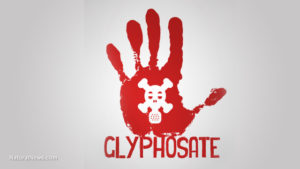 A new testing program organized by The Detox Project in coordination with Kudzu Science, has released the first ever results for glyphosate levels in human hair, in an extraordinary announcement on Wednesday.
A new testing program organized by The Detox Project in coordination with Kudzu Science, has released the first ever results for glyphosate levels in human hair, in an extraordinary announcement on Wednesday.
The unique project, which began in July 2018, has already discovered the world’s most used herbicide, glyphosate, in a number of hair samples at over 66 parts per billion (ppb), which is a much higher level than the average urine level of 3 ppb reported by the University of California San Francisco in 2016. The main metabolite of glyphosate, AMPA, was also found in some of the hair samples at even higher levels than glyphosate itself.
From a small set of 10 initial samples collected from the public in the U.S., Europe and Australia, it was shown that:
* 7 samples contained glyphosate levels above the Limit of Detection (66 ppb) but below the Limit of Quantification (200 ppb)
* 6 samples contained AMPA (the main metabolite of glyphosate) above the Limit of Detection (330 ppb) but below the Limit of Quantification (1000 ppb) and
* 3 samples contained glufosinate above the Limit of Detection (33 ppb) but below the Limit of Quantification (100 ppb)
The Kudzu Science mass spectrometry gold standard method used for testing glyphosate, AMPA and glufosinate is fully validated, which gives these results even more significance.

Glyphosate Chemical Formula
The Detox Project Director, Henry Rowlands, stated Wednesday; “Even at this early stage of testing we believe it is vital to warn the public and regulators that glyphosate is being found in human hair.
“The levels found are surprising to everyone involved, as we have been working on urine testing with university and commercial laboratories over the past four years and we have never seen such results.”
One of the main questions now for the public, scientists, regulators and the pesticide industry, is how are such levels of the world’s most used herbicide first entering the blood stream and then ending up in our hair?
Hair: A New Era for Pesticide Testing
It is only recently that new developments in laboratory technology and science have enabled pesticides to be tested accurately in hair. Hair testing is now set to replace urine and blood as the preferred matrix for public pesticide testing for the following reasons:
* Hair testing shows your exposure to pesticides over a period of 90-120 days, whereas
* Urine Testing shows your exposure for approximately 14-21 days and
* Blood Testing shows your exposure for 2-3 days
Hair Testing also has some other advantages:
* Easy collection
* Easy transport
* Easy storage
* Easy collection
* Enables continuous cost effective bio-monitoring over a year: 4 samples vs 100 for blood vs 26 for urine
Some of the recent developments in hair testing for pesticides have been reviewed and published by the Luxembourg Institute of Health and French Ministry of Agriculture.
Another peer-reviewed paper, published during an ongoing study by the U.S. National Institutes of Health, concluded that ongoing exposure of children to environmental pesticides can now be sensitively detected by the analysis of children’s hair and house dust.
Dr. Vincent Peynet, Director of Kudzu Science, stated; “Our initial testing involves 33 of the most ubiquitous pesticides used in the home and 32 of the most ubiquitous pesticides used in agriculture. You can receive online results within 15 days of your hair samples being received by the Kudzu Science laboratory.”
“This is just the start, we are developing a variety of hair tests for the public, which will be released over the coming months,” Dr. Peynet added.
Rowlands concluded that “The Detox Project aims to use this extraordinary new tool to change how the general public views glyphosate and other pesticides. We can only do this by showing people around the world how pesticides build up in their bodies over the long-term.”
Researched, written for and published by Sign of the Times ~ October 17, 2018
 FAIR USE NOTICE: This site contains copyrighted material the use of which has not always been specifically authorized by the copyright owner. We are making such material available in our efforts to advance understanding of environmental, political, human rights, economic, democracy, scientific, and social justice issues, etc. We believe this constitutes a ‘fair use’ of any such copyrighted material as provided for in section 107 of the US Copyright Law. In accordance with Title 17 U. S. C. Section 107, the material on this site is distributed without profit to those who have expressed a prior interest in receiving the included information for research and educational purposes. For more information go to: http://www.law.cornell.edu/uscode/17/107.shtml“
FAIR USE NOTICE: This site contains copyrighted material the use of which has not always been specifically authorized by the copyright owner. We are making such material available in our efforts to advance understanding of environmental, political, human rights, economic, democracy, scientific, and social justice issues, etc. We believe this constitutes a ‘fair use’ of any such copyrighted material as provided for in section 107 of the US Copyright Law. In accordance with Title 17 U. S. C. Section 107, the material on this site is distributed without profit to those who have expressed a prior interest in receiving the included information for research and educational purposes. For more information go to: http://www.law.cornell.edu/uscode/17/107.shtml“
